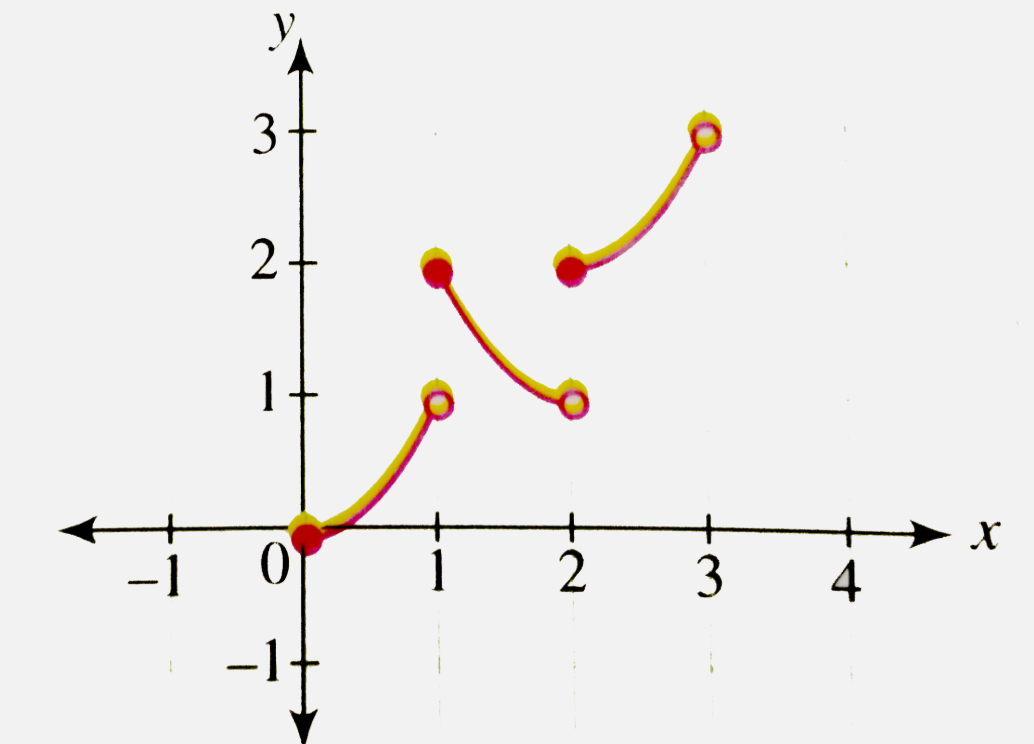If f:R→Q (rational numbers), g:R→Q (Rational number ) are two continuous functions such that √3f(x)+g(x)=4, then (1−f(x))3+(g(x)−3)3 is equal to a. 1 b. 2 c. 3 d. 4Solution in Tamil
1
2
3
4
The correct Answer is:B
f:R→Qandg:R→Q,but√3f(x)+g(x)=4 it is trure only.
when f(x)=0⇒g(x)=4
∴ (1−f(x))3+(g(x)−3)3=2
Topper's Solved these Questions
- BOOK - CENGAGECHAPTER - FUNCTIONSEXERCISE - Multiple Correct Answers Type10videos
FUNCTIONS
- BOOK - CENGAGECHAPTER - FUNCTIONSEXERCISE - Comprehension Type7videos
FUNCTIONS
- BOOK - CENGAGECHAPTER - EQUATION OF PLANE AND ITS APPLICATIONS -IIEXERCISE - DPP 3.418videos
EQUATION OF PLANE AND ITS APPLICATIONS -II
- BOOK - CENGAGECHAPTER - GETTING STARTED WITH GRAPHSEXERCISE - Exercise18videos
GETTING STARTED WITH GRAPHS
Similar Questions
The function f(x)=cos−1⎛⎝2[|sinx|+|cosx|]sin2x+2sinx+114⎞⎠ is defined if x belongs to (where [.] represents the greatest integer function)
04:47View SolutionLet f(x)=x2−2x−1∀x∈R Let f:(−∞,a]→[b,∞), where a is the largest real number for which f(x) is bijective. If f:R→R , g(x)=f(x)+3x−1 , then the least value of function y=g(|x|) is
02:08View SolutionLet A(0,6,6), B(6,6,0) and C(6,0,6) are three points and point D is moving on the line x+z−3=0=y. If G is centroid of ΔABC, then minimum value of GD is
02:46View SolutionDoes the following graph pass the vertical or horizontal line test ?
 03:10View Solution
03:10View SolutionIf f(x)=ax^(2)+bx+c and g(x)+px^(2)+qx with g(1)=f(1)g(2)-f(2)=1g(3)-f(3)=4 then g(4)-f(4) is
01:17View SolutionIf f(x)=x3+2x2+3x+4 and g(x) is the inverse of f(x) then g′(4) is equal to- 14 (b) 0 (c) 13 (d) 4
01:24View SolutionIf f(x)=x3+2x2+3x+4 and g(x) is the inverse of f(x) then g′(4) is equal to a.14 b.0 c.13 d. 4
01:42View SolutionIf f:R→Q (rational numbers), g:R→Q (Rational number ) are two continuous functions such that √3f(x)+g(x)=4, then (1−f(x))3+(g(x)−3)3 is equal to a. 1 b. 2 c. 3 d. 4
05:35View SolutionIf f:R rarr Q (Rational numbers),g:R rarr Q (Rational numbers) are two continuous functions such that sqrt(3)f(x)+g(x)=4 then (1-f(x))^(3)+(g(x)-3)^(3) is equal to (1)1(2)2(3)3(4)4
02:27View SolutionIf f(x)=(1)/(x-1) and g(x)=(x-2)/(x+3), then number of points of discontinuity in f(g(x))is(1)1(2)2(3)3(4)4
02:05View SolutionSuppose F(x)=f(g(x)) and g(3)=5,g'(3)=3,f'(3)=1,f'(5)=4 Then F'(3)=
04:54View Solutionf(x) and g(x) are two differentiable functions on [0, 2] such that f''(x)−g''(x)=0,f'(1)=2,g'(1)=4,f(2)=3 and g(2)=9, then [f(x)−g(x)] at x=32 is equal to -
02:36View SolutionIf f and g are continuous functions with f(3)=5 and limx→3[2f(x)−g(x)]=4, find g(3).
02:57View SolutionIf f:R→Q (rational numbers), g:R→Q (Rational number ) are two continuous functions such that √3f(x)+g(x)=4, then (1−f(x))3+(g(x)−3)3 is equal to a. 1 b. 2 c. 3 d. 4
02:47View SolutionIf f(x), g(x) be twice differentiable functions on [0,2] satisfying f''(x)=g''(x) ,f'(1)=2g'(1)=4 and f(2)=3g(2)=9, then f(x)−g(x) at x = 4 equals (A) 0 (B) 10 (C) 8 (D) 2
02:20View SolutionIf f:R→Q (Rational numbers), g:R→Q (Rational numbers) are two continuous functions such that √3f(x)+g(x)=4 then (1−f(x))3+(g(x)−3)3 is equal to (1) 1 (2)2 (3) 3 (4) 4
04:47View Solution

